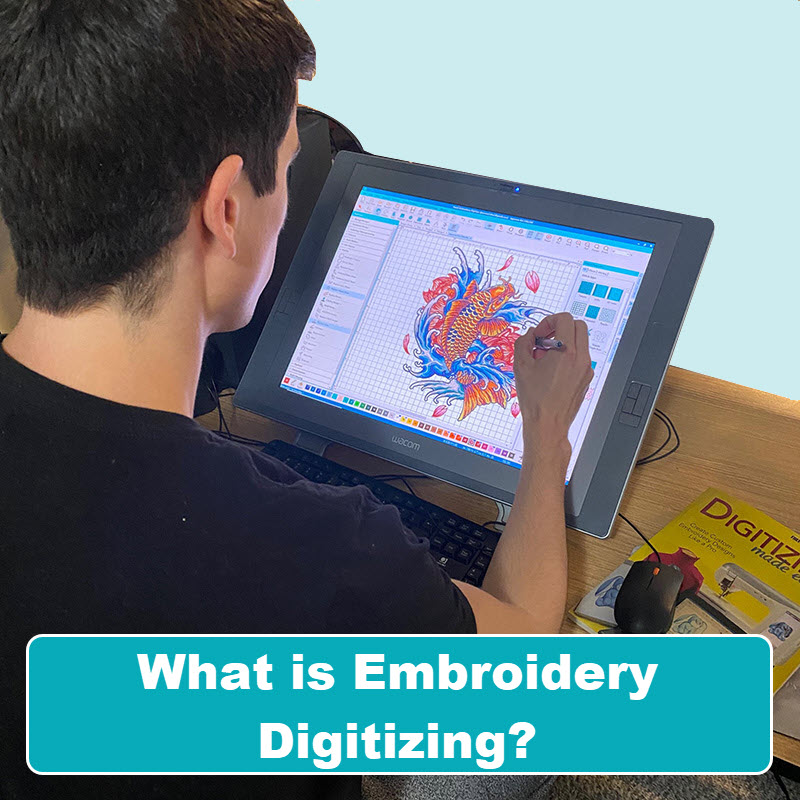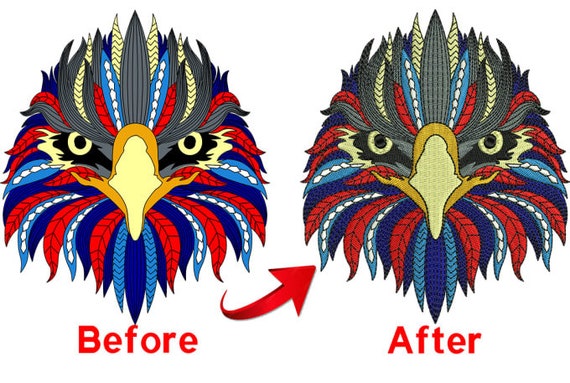Top-Rated Digitizing for Embroidery: Perfect Stitch Each Time
Top-Rated Digitizing for Embroidery: Perfect Stitch Each Time
Blog Article
Understanding the Embroidery Digitizing Process: Your Ultimate Overview
Needlework digitizing is a precise craft that calls for accuracy and competence to equate complex styles right into digital styles for device embroidery. As artisans get started on this trip to grasp the embroidery digitizing process, an extensive understanding of the basics sets the structure for quality.

Comprehending Needlework Digitizing Essentials
Embroidery digitizing basics form the foundation upon which intricate designs are translated into machine-readable layouts for precise sewing. This first action in the needlework digitizing procedure is critical for making certain that the last stitched product is a faithful representation of the initial layout. Understanding needlework digitizing essentials includes understanding essential concepts such as stitch types, sew instructions, density, underlay, and pull settlement.
Sew types play an important role in determining the aesthetic and textural end result of the stitched style. By picking the ideal stitch kind, whether it be satin, fill, or running stitch, digitizers can accomplish the desired effect and boost the general quality of the needlework. Furthermore, stitch instructions affects the flow and measurement of the layout, while thickness establishes the spacing and coverage of the stitches.
Additionally, padding sewing offers stability to the style by securing the textile and stopping distortion during the needlework process. Draw payment is another essential factor to consider to counteract the all-natural tendency of textile to contract when sewn. Mastering these needlework digitizing basics is basic for producing professional-quality stitched products.
Selecting the Right Digitizing Software Program
Selecting the proper digitizing software program is an important decision that substantially influences the effectiveness and high quality of the needlework digitizing procedure. Digitizing for Embroidery. When choosing the best digitizing software program, it is vital to think about aspects such as the intricacy of layouts you intend to develop, the user-friendliness of the software program, the degree of customer support offered, and the compatibility with your embroidery device
There are different digitizing software application choices available in the marketplace, varying from standard programs for newbies to innovative software program for specialist digitizers. Some preferred selections consist of Wilcom EmbroideryStudio, Hatch Embroidery Software Application, and PulseID. These software provide a wide variety of tools and features to aid you develop complex styles easily.
Before choosing, it is advisable to explore the various software application choices with totally free trials or trials to establish which one finest suits your needs. In addition, reviewing evaluations and seeking referrals from knowledgeable digitizers can supply important understandings into the staminas and weak points of each software plan (Digitizing for Embroidery). By meticulously evaluating your needs and contrasting the features of various digitizing software application, you can make an informed selection that improves your needlework digitizing process
Digitizing Devices and Methods

Optimizing Layout Setup for Needlework
Grasping the intricacies of style setups is fundamental in attaining optimal outcomes in the needlework digitizing process, structure upon the structure laid by understanding digitizing devices and strategies. When enhancing layout settings for embroidery, it is crucial to think about aspects such as stitch type, density, rug, draw compensation, and registration. Enrollment setups align various aspects of the style accurately, preserving total style honesty.

Troubleshooting Common Digitizing Issues
When encountering common digitizing concerns during the embroidery procedure, it is vital to recognize the root triggers and carry out effective remedies quickly. One usual problem is stitch density problems, where stitches might be too dense, creating the textile to pucker, or too thin, causing spaces in the style. Readjusting the stitch thickness setups in the digitizing software can assist solve this concern.
Another regular difficulty is string breaks throughout the needlework process. This can occur as a result of different factors such as inaccurate tension settings, Related Site dull needles, or using low-quality string. Ensuring appropriate maintenance of the needlework maker, consisting of normal needle adjustments and stress changes, can decrease the occurrence of thread breaks.
Furthermore, design registration errors can result in misaligned elements within the embroidery design. Checking the design alignment in the digitizing software and making required adjustments before stitching can help in avoiding this issue. By dealing with these common digitizing issues promptly and effectively, you can guarantee a smoother embroidery process and premium completed products.
Conclusion
To conclude, mastering the needlework digitizing procedure needs a solid understanding of the basics, the best choice of software application, and understanding of tools and methods. Optimizing style settings and repairing usual digitizing issues are essential action in making sure top notch embroidery results. check my blog By adhering to these actions faithfully, one can attain precision and performance in the digitizing procedure.
Report this page